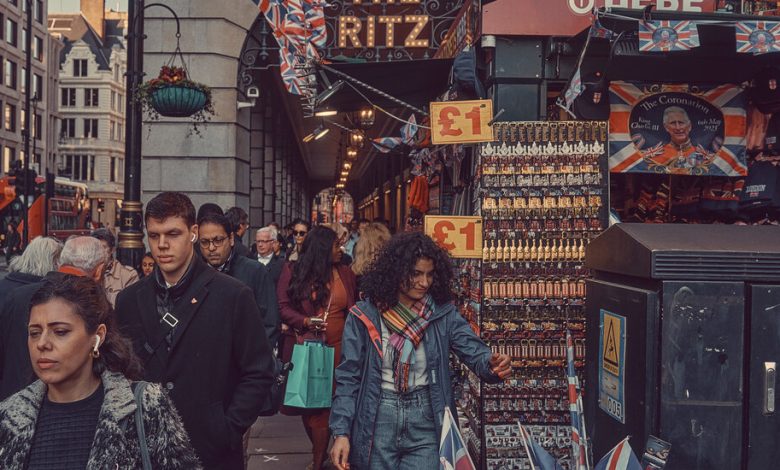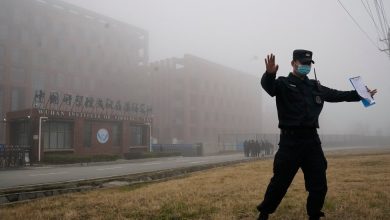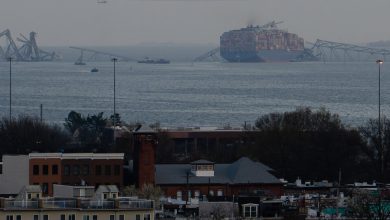In the Footsteps of Charles III

No royal heir in British history has waited longer than Charles III, the king formerly known as the Prince of Wales, to ascend the throne. When he is officially crowned, on May 6, Charles will be 74 years old — a full 47 years older than his mother, Elizabeth II, was at her own coronation way back in the mid-20th century.
A lot has changed in the monarchy, and in the monarch, since the early days of the queen’s reign. Elizabeth came to the top job through accidents of history and fate. Her uncle, Edward VIII, abdicated in 1936, disrupting the normal order of succession; her father, George VI, succeeded him but died 16 years later at the age of 56, propelling Elizabeth onto the throne. By contrast, Charles — the oldest Prince of Wales in British history to become king — was born a monarch-in-waiting and has had a lifetime to prepare.
The public in turn has had a lifetime to get to know Charles, starting from his rarefied childhood in the public eye. We had a ringside seat at his marriage to Diana, Princess of Wales, who died in 1997; we followed his affair with and eventual marriage to Camilla Parker Bowles; we saw his struggles with his second son, Prince Harry, in an ongoing saga that is bound to spill over into the coronation, which Harry is scheduled to attend without his wife, Meghan, the Duchess of Sussex.
By tradition, heirs to the throne don’t meddle in unroyal matters. But Charles was an unusually outspoken Prince of Wales. He is known as a lover of classical music, a student of philosophy and world religions and a proponent of sometimes controversial ideas. He has often waded into debates on unexpected topics like alternative medicine and organic farming (pro) and modernist architecture (against).
In London alone, there are plenty of royal spots to visit (Kensington Palace and Westminster Abbey, for starters), royal-themed exhibits to explore (“The Royal Palace Experience” at Madame Tussauds) and coronation-themed walking tours through this most inviting of cities.
But for visitors interested in exploring the history and psyche of the new king, here are some stops on an alternative royal tour in and around the city.
Highgrove
Charles bought Highgrove House, a Georgian neo-Classical estate in Gloucestershire, in 1980, before he married Diana. He saw it as a refuge, a bolt-hole in which he could pursue country pleasures and contemplate the beauty of nature; she found it boring and preferred the city. More and more, it became the place where he arranged discreet trysts with Camilla Parker Bowles.
The house — reachable by bus from London, or by taking a train to Kemble, and then a taxi — is closed to outsiders. But the grounds are open for tours each April through October. Until the end of May, there’s also an exhibition at the Garrison Chapel in Chelsea, London, “Highgrove in Harmony: Exploring A Royal Vision,” that lets you appreciate the gardens without leaving the city.
The exhibition demonstrates how fully the gardens embody Charles’s philosophical and aesthetic preoccupations: his love of nature, his passion for tradition, his enthusiasm for artisanal crafts. There’s a winsome photo of him on his knees weeding, and several never-before-seen princely watercolors and sketches. Charles is said to have even personally planted much of the thyme in what is known as the Thyme Walk.
King Charles III, the New British Monarch
Charles, the eldest son of Queen Elizabeth II, acceded to the throne after being the designated successor for longer than anyone in the history of the British crown.
- A Coronation F.A.Q.: The coronation of Charles III, the former Prince of Wales, is set to take place on May 6. Here is everything you need to know about.
- A New Title for Edward: King Charles III named Edward, his youngest brother, the Duke of Edinburgh on his 59th birthday. The title was previously held by their father, Prince Philip.
- Journey to the Throne: Once an awkward, self-doubting young man, the 73-year-old Charles comes to the throne as a self-assured, gray-haired eminence.
- A Personal Empire: As prince, Charles used tax breaks and offshore accounts to turn his estate into a billion-dollar portfolio, while Britain faced austerity.
The gardens consist of a number of interconnected parts and you can see photographs of them all here, including the flower-dotted Wildflower Meadow, which Charles envisioned as imitating “the foreground in Botticelli’s great painting ‘Primavera.’” It’s farmed using traditional methods — scythed by hand and visited each autumn by Shropshire sheep. As Charles once said: “I never underestimate the value of the ‘golden hoof’ in the great scheme of biodiversity.”
Trinity College, Cambridge
When Charles was still an unhappy student in a remote Scottish boarding school, a high-level committee decreed that, in a break with tradition, he should continue his education instead of going directly into the military. Thus he became the first Prince of Wales ever to receive a university degree.
The young prince was sent to Trinity, the richest of Cambridge University’s 31 colleges. His life there was hardly normal. Isolated by temperament and position from most of the other students, Charles frequently repaired to the countryside for shooting weekends and to London for cultural and state functions. (He also studied for some months in Wales in preparation for his formal investiture as Prince of Wales at Caernarfon Castle, a medieval fortress in northwest Wales.) According to a contemporary report in The Times, Charles did give student life a go. He sang, acted, contributed to the university magazine, played polo against Oxford, took an evening pottery course and went on an archaeological dig with other students to the island of Jersey.
You can visit the princely academic habitat by taking the hour-or-so-long train ride from London to Cambridge; Trinity is a short cab ride into town. Founded by Henry VIII in 1546, the college is impressively grand, due in part to its reported 1.3 billion pounds in assets. (Its holdings include the O2 Arena in London and great swaths of the busy and lucrative Port of Felixstowe.)
Since the pandemic, Trinity’s awe-inspiring interior — including the Great Court; a famous statue of Henry VIII holding a chair leg that at some point replaced his original sword; and the library designed by Sir Christopher Wren and dating to 1695 — has, sadly, been closed to the public. But visitors can approach from the back, walking along a network of college-owned lawns across the Cam River, and peer in through the formidable gates. There the college porters, resplendent in bowler hats, will be happy to share royal and other tidbits.
The British Library
Charles, a devotee of traditional building materials and traditional buildings, has spent many years attacking what he sees as the scourge of modernist architecture. In 1984, he managed to offend many members of the London architectural establishment by denouncing their work in a speech to the Royal Institute of British Architects.
His interventions had a knock-on effect, causing the cancellation of some of the buildings he singled out for particular scorn. Some of the casualties: a planned extension to the National Gallery, which Charles compared to a “monstrous carbuncle”; a Mies van der Rohe-designed building that he called “a giant glass stump”; and three projects by Richard Rogers, the modernist architect who died in 2021. “You have to give this much to the Luftwaffe,” Charles said, referring to one of Mr. Rogers’s proposals. “When it knocked down our buildings, it didn’t replace them with anything more offensive than rubble.”
Charles’s biggest bête noire was the British Library, an epic project designed by the architect Colin St. John Wilson that cost more than $700 million and took 36 years from inception to completion, and that he said looked like a “dim collection of sheds groping for some symbolic significance.” (For good measure, he compared its reading room to “the assembly hall of an academy for secret police.”)
The library opened in 1998 and was an instant hit, though most people agree that the building’s pedestrian red brick interior does a disservice to the majestic interior, with its cunning deployment of multiple levels, soaring spaces and beautiful use of light. Its centerpiece is the King’s Library, a leather- and vellum-bound collection that rises up in a six-story glass bookcase at the building’s core.
The library is now a buzzy and vibrant cultural center thrumming with life. Some of its greatest treasures are displayed in its dedicated exhibition space. (Asked for a recommendation on a recent visit, a library official said: “I quite like the Magna Carta.”)
Mr. St. John Wilson never really recovered from all the criticism, though he was knighted in 1998. He died in 2007, at 85. Eight years later, the library was designated a Grade I-listed building, Britain’s highest heritage honor.
The Ritz
London is full of Charles-related locations, as you might expect. There is Clarence House, where he and soon-to-be-crowned Queen Camilla lived for many years. There is Hill House in West London, where he went to elementary school, and the Tower of London, where many of his family’s jewels are on display. (It’s currently without the Imperial State Crown and Queen Mary’s Crown, which are being used in the coronation.)
And there is the Ritz hotel, the scene of the historic occasion when Charles and Camilla emerged from the shadows of their extramarital affair and appeared in public as a couple for the first time. All they did was leave a party and briefly stand outside. But this was the moment, as The Independent newspaper put it at the time, when “15 seconds of blinding flashbulbs ended at least 12 years of ducking and diving.”
The year was 1999, four years after Diana threw a grenade into the royal myth by declaring that “there were three of us in this marriage” — meaning she, Charles and Camilla. The couple divorced in 1996; Diana’s fatal car accident took place the following summer. The appearance at the Ritz was the beginning of Camilla’s integration into Charles’s public life, culminating in the couple’s marriage, in 2005.
The Ritz is as stately a venue for a romantic coming-out as it is possible to be. Situated on the corner of Green Park on Piccadilly, it evokes old-school opulence and over-the-top obsequious hospitality.
Nonroyal visitors can eat in the Michelin-starred restaurant (sample dinner entree: Dover sole for 68 pounds, or about $85); sip cocktails at the Rivoli Bar, or take afternoon tea, for 70 pounds apiece, in the grand foyer. Pro tip: Wear something nice, get a good blowout and leave your fanny pack at home. However you look, you will feel frumpy compared to everyone else.
Poundbury
Nestled at one end of Dorchester in Dorset, southwest England, Poundbury is the embodiment of the king’s singular Weltanschauung, a community built from scratch on 400 acres of farmland owned by the Duchy of Cornwall, the royal estate. With some 4,600 residents, it’s a royal experiment in contemporary living meant to “break the mold of conventional housing,” Charles once said.
Poundbury’s central hub is named Queen Mother Square, after Charles’s late grandmother; the main pub-cum-hotel is called the Duchess of Cornwall Inn, after his wife. But mostly the town is an exercise in soft-power royalty. The traditional building materials, the human-scale architecture, the master plan by the modernist-eschewing Luxembourgish architect Léon Krier, the harmonious aesthetic in the prettily painted front doors, the artisanal shops — all these reflect Charles’s values and philosophy.
Take the train to Dorchester South, hop on a bus to Poundbury and disembark at the square, identifiable by the huge Queen Mother statue. Walk down the street in any direction to get the feel of the place.
Here classic townhouses intermingle with apartment buildings and free-standing one-family homes, interspersed with squares, tiny parks and cunningly constructed courtyards and alleys that convey an air of openness and connection. There is no litter. There are few pedestrians and very little noise.
Poundbury’s residents are zealous converts to this way of living. Outsiders have been less enthusiastic. The town has been compared to a Potemkin village, to Brigadoon, to a “feudal Disneyland” and to the town in the movie “The Truman Show.”
To judge for yourself, shop at the garden center for flowers and horticultural accouterments. Eat at one of the quaint nearby cafes, like the Potting Shed, with its many sorts of olives. Buy some artisanal bread at Finca in a grand building known as the Buttercross, catch up on town gossip at the Buttermarket convenience store, which doubles as the post office, or indulge in a spa treatment at Pure Beauty.
Farther afield
You won’t find Charles featured on the website of Gordonstoun, the remote Scottish boarding school his father, Prince Philip, forced him to attend and which he once referred to as “Colditz in kilts,” referring to the prisoner-of-war camp run by the Nazis. But it happens to be surrounded by extraordinarily beautiful (if often wet and cold) countryside, and is near, among other things, the lovely 13th-century market town of Elgin.
As befitting his former role as Prince of Wales, Charles has a residence in Wales: Llwynywermod, near Mydffai, a tiny village near the Brecon Beacons National Park. It’s closed to the public, but visitors really yearning for royal experiences can choose from two vacation cottages — North Range and West Range — available for rent on the property.
Follow New York Times Travel on Instagram and sign up for our weekly Travel Dispatch newsletter to get expert tips on traveling smarter and inspiration for your next vacation. Dreaming up a future getaway or just armchair traveling? Check out our 52 Places to Go in 2023.





